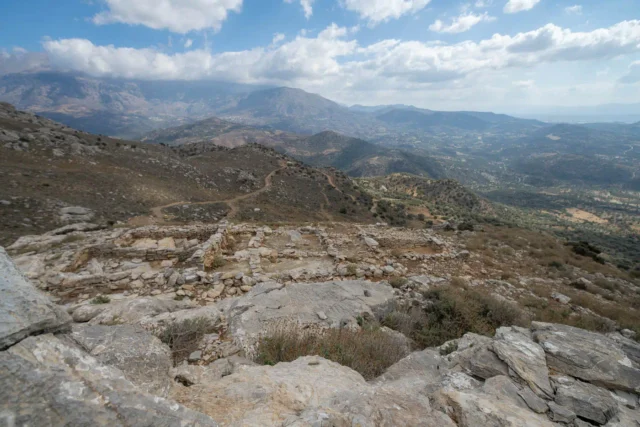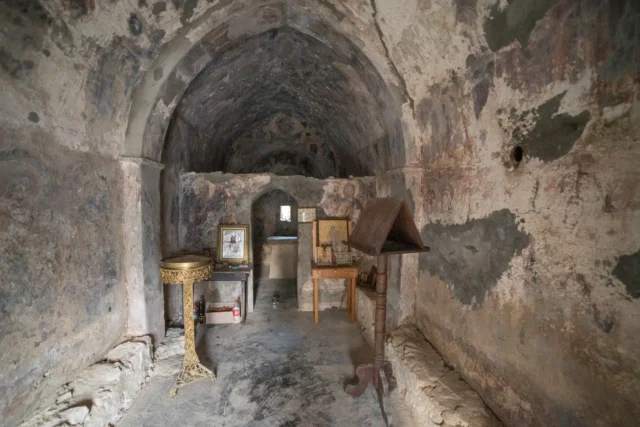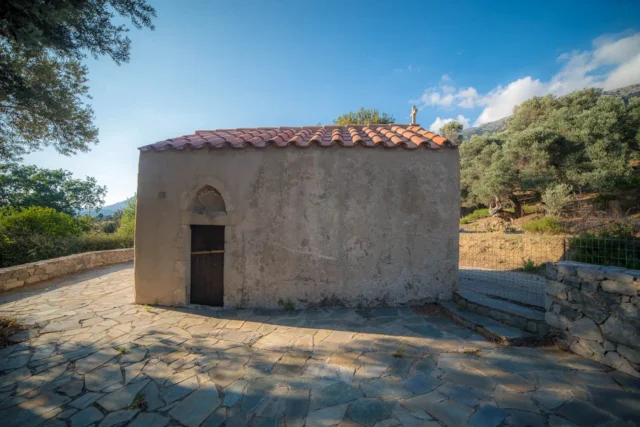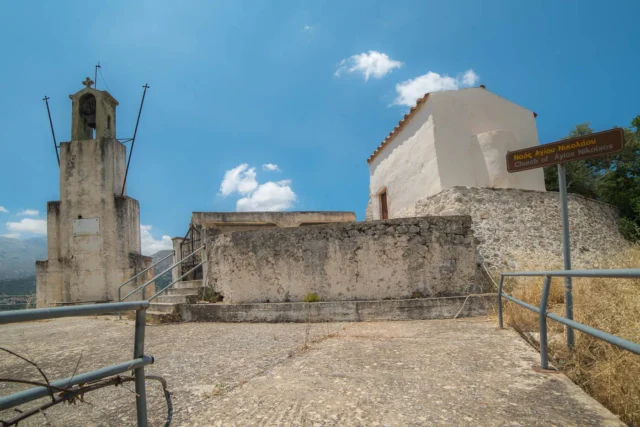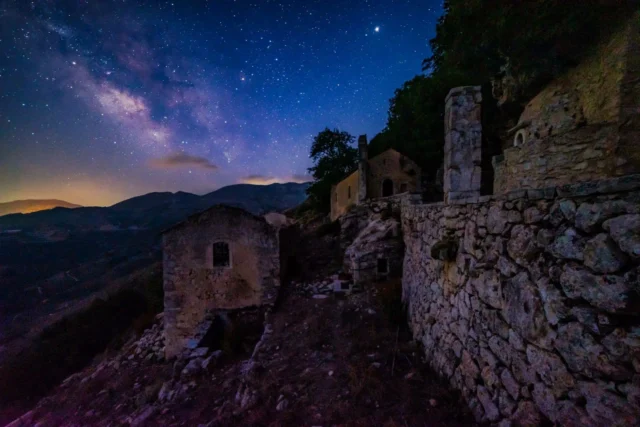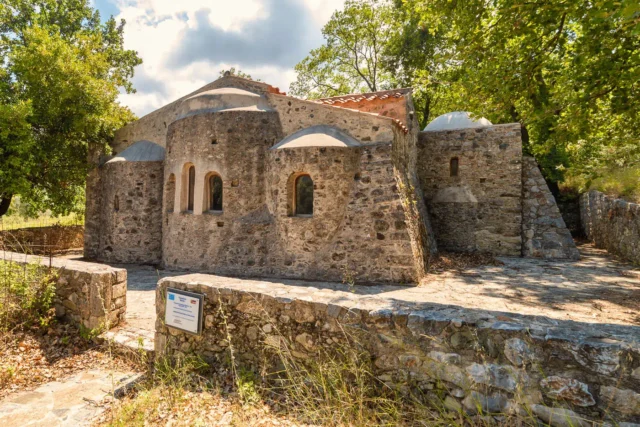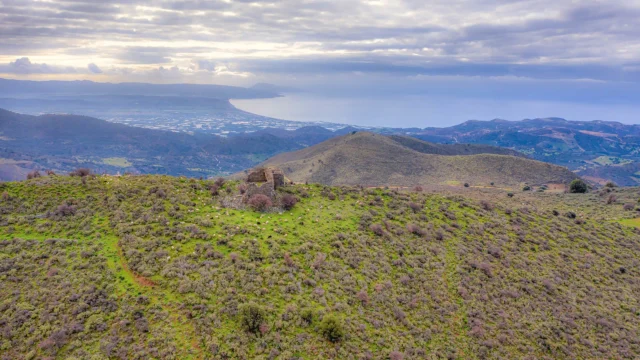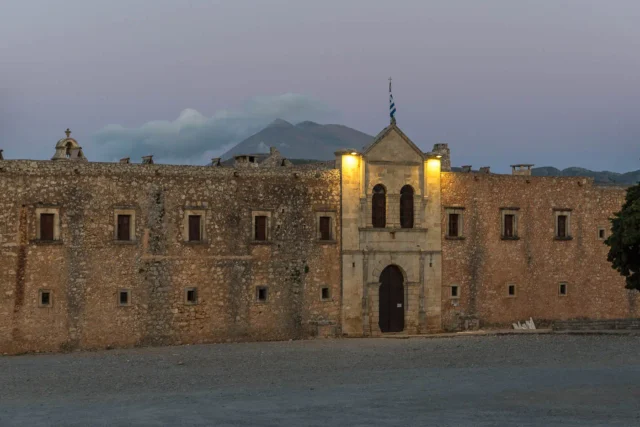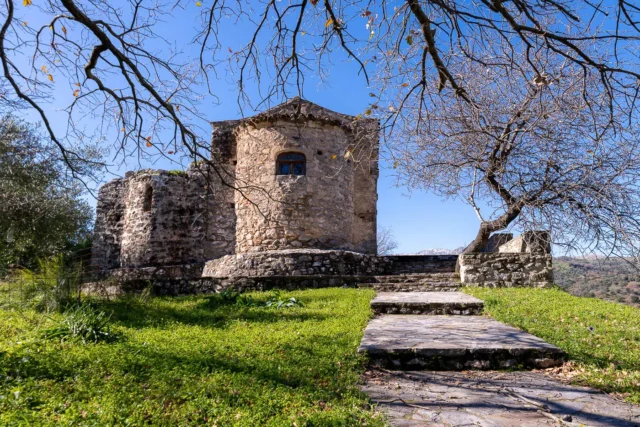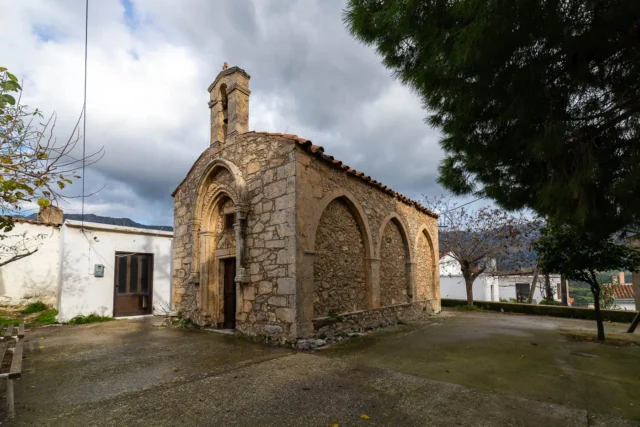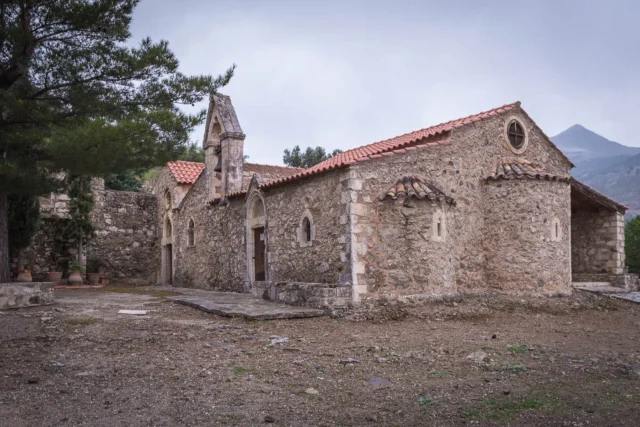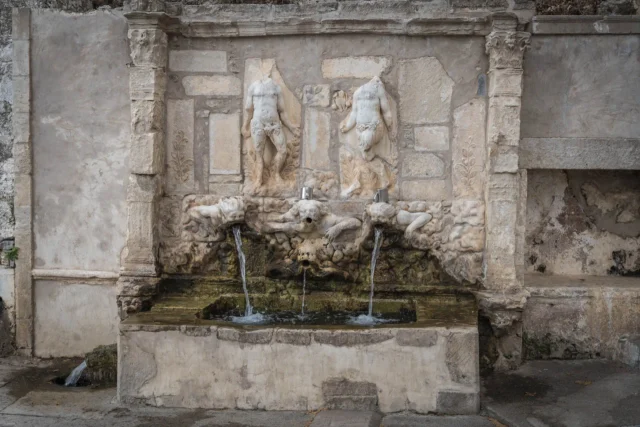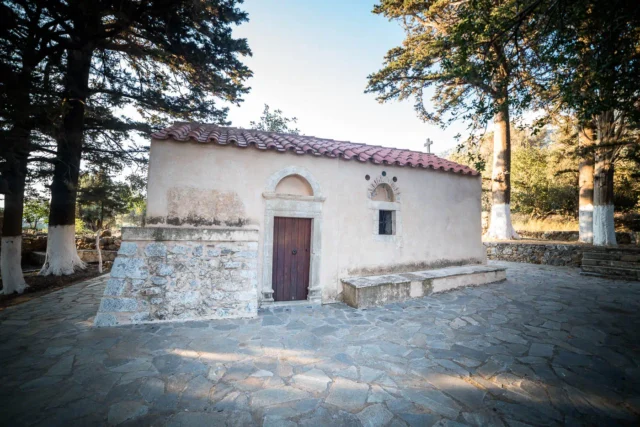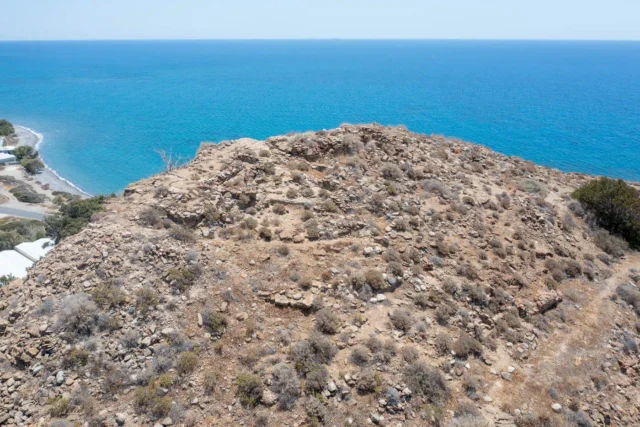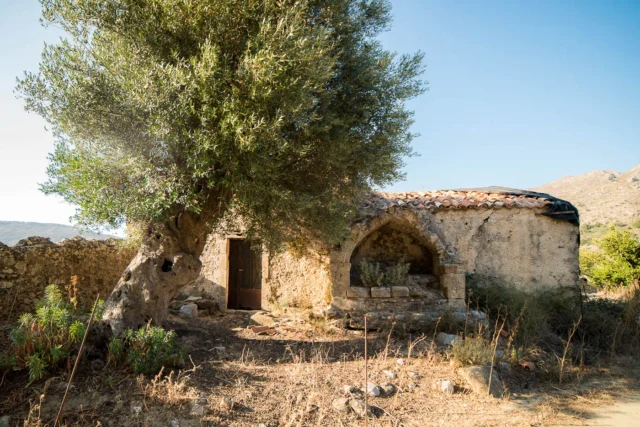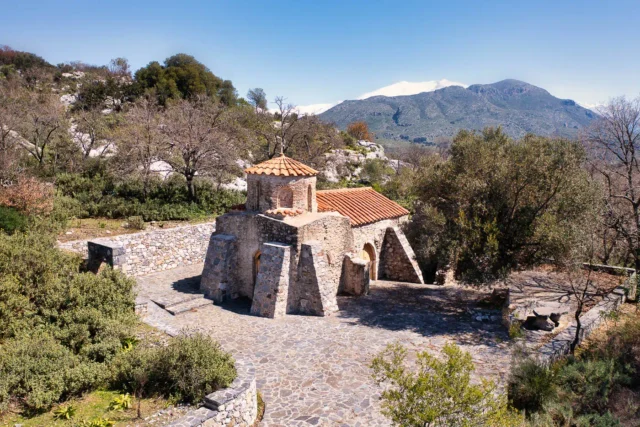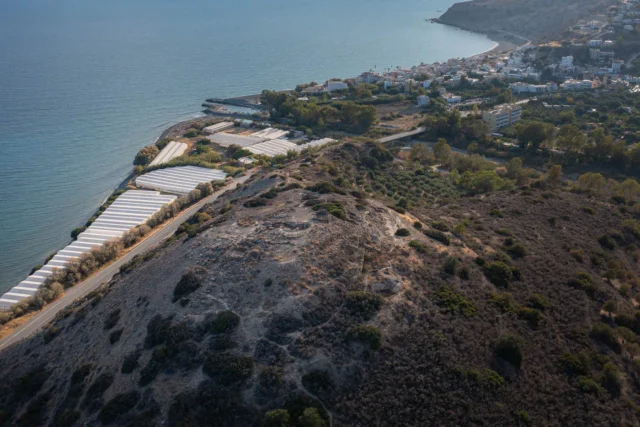748
listings found
Categories
Active filters:
Mycenaean Acropolis of Ornes
The Mycenaean Acropolis of Orne in south Crete offers a glimpse into the Late Bronze Age. Discover its fortifications, buildings, and artifacts, and learn about its historical significance.
Agios Onoufrios
Agios Onoufrios Church, constructed in 1329/1330 near Genna, Amari, Crete, is a single-aisled, barrel-vaulted Byzantine chapel with a semi-circular apse.
Built by the Varouchas family, its frescoes, dating to its construction, depict religious scenes like the Deesis, Annunciation, and Crucifixion, showing connections to the Macedonian School. A rare, well-preserved stone templon and glazed ceramic plates decorate the entrance. The church's artistic style links it to other regional churches, such as those in Margarites, Chalepa, Lampiotes, and Apodoulou.
Agios Antonios in Veni hill
Agios Antonios cave sanctuary, situated on Veni Hill in Amari, Rethymno, Crete, reveals a blend of Minoan, Byzantine, Venetian, and Ottoman history. Originally a Minoan worship site, it evolved into a Byzantine monastery dedicated to Agios Antonios. It served as a refuge for Cretan rebels, earning the name "Pnyka of Crete," and faced Ottoman attacks. The site is linked to Arkadi Monastery and features a holy spring, monastic cells, and remnants of past monks. Currently under restoration, the cave holds ancient clay basins and celebrates Agios Antonios' feast day. The location offers views of the Psiloritis range, reflecting Crete's spiritual and resistance heritage.
Panagia Kera
Panagia Kera, near Nefs Amari, is a 15th-century three-aisled basilica, constructed over a 13th-century cross-in-square church, potentially an earlier Apollo temple site. This Byzantine masterpiece features frescoes, including the Dormition of the Virgin and Ascension, and the Kallergis family coat of arms, linking it to the Venetian period. Once a monastery katholikon under Moni Asomaton, it stands amidst ancient olive groves, with remnants of its past visible in the sanctuary and surrounding area, reflecting Crete's rich historical layers and cultural influences.
Koules in Vathiako
Explore the Koules in Vathiako, a ruined Ottoman fortress in Crete, and learn about its role in controlling the island and protecting the Muslim village
Arkadi monastery
Located on a fertile plateau, this monastery is a symbol of Cretan resilience with a 16th-century structure blending Renaissance and Baroque styles. It became a refuge during the 1866 Cretan Revolt against Ottoman rule, where defenders, led by Abbot Gabriel Marinakis, detonated gunpowder in a heroic act of self-sacrifice. The event is commemorated on November 8th. The complex includes a museum and is linked to the Agios Antonios church on Veni hill. Other feast days are May 21st and August 6th.
Agia Anna
Agia Anna, near Nefs Amari, Crete, features 12th-century origins and 14th-century renovations. It houses 1225 Byzantine frescoes, including the Deesis and Cretan saints like Apostle Titus. The church's 1196 inscription marks its early phase, reflecting Byzantine art evolution in Crete. The frescoes, though aged, retain vibrancy, showcasing artistic and spiritual heritage. Located in the Amari Valley, the site offers insights into Crete's historical and cultural context, despite occasional access restrictions.
Valsamonero monastery (Aghios Fanourios)
Explore the historic Varsamonero Monastery in Crete, known for its well-preserved 14th-15th century frescoes and connection to Saint Phanourios.
Vrontisi monastery
Moni Vrontisiou, a historic monastery in the Psiloritis Mountains of Crete, dates back to the 9th century. Dedicated to Saint Anthony and the Touching of Thomas, it is known for its architecture and frescoes. The monastery played a role in the Cretan struggle for independence, serving as a refuge for monks and a hub for revolutionary activities. Its fortified walls, two-story main building, and bell tower stand as a testament to its history. The 15th-century marble fountain at the entrance is a highlight, featuring intricate carvings. The main church houses surviving frescoes from the 14th century. Moni Vrontisiou is located 49 kilometers southwest of Heraklion and is open daily from 8:00 AM to 5:00 PM with free admission.
Panagia in Livada
Located in Livada, near Fourfouras in Amari, this is a small, single-aisled, barrel-vaulted church from the 14th century. It features well-preserved frescoes from that period, financed by Nicholas Arkoleo, depicting the Virgin Mary as Blachernitissa, scenes from Christ's life, and military saints. The structure, originally built with rubble masonry, was expanded westward in the early 19th century. After restoration in 2006, the building and its Byzantine iconography are in good condition.
Fournou Koryfi
Fournou Korifi, an Early Minoan settlement near Myrtos village in Crete, dating back to the mid-3rd millennium BCE, provides valuable insights into the Minoan civilization. The settlement, with approximately 90 rooms during its peak, features the "Myrtos Goddess" figurine and evidence of workshops and diverse economic activities. Archaeologists, including Peter Warren, have studied the site's social structures, with interpretations ranging from communal living to a more complex hierarchy. The South House offers a glimpse into domestic life with its weaving room and kitchen. Fournou Korifi's well-preserved remains contribute to our understanding of Early Minoan architecture, social organization, and daily life.
Kaloeidena monastery
The Afentis Christos Church, a Byzantine structure overlooking Ano Meros, is a focal point for local faith, highlighted by annual August 6th feasts with communal meals and traditional celebrations. Kaloeidena Monastery, now largely in ruins, needs preservation, despite its historical and spiritual value. Both sites reflect Amari Valley's enduring traditions, with efforts aimed to revitalize Kaloeidena, ensuring its role as a cultural and religious landmark. The church stands as a testament to the local community's deep-rooted faith, while the monastery's restoration aims to preserve Crete’s heritage.
Panagia in Smilés
Explore the remnants of the Church of Panagia in the deserted village of Smilés, Crete. Discover its 14th-century frescoes and learn about its historical significance
Myrtos archaeological site
The Myrtos-Pyrgos archaeological site, also known as Pyrgos, is a significant Minoan Bronze Age settlement located on the southern coast of Crete, near Ierapetra. Occupied from the Early Minoan II to the Late Minoan IB period, it provides valuable insights into the development of the Minoan civilization. The site's strategic location and long occupation history make it a key resource for understanding the social, economic, and political dynamics of this ancient society. Excavations have revealed a variety of artifacts, including seals, seal impressions, Linear A tablets, and inscriptions on clay vessels, shedding light on the evolution of communication, administrative practices, and trade networks in Minoan Crete. The site's chronological phases, from Pyrgos I to Pyrgos IV, show a growing cultural sophistication and connections with other parts of Crete, including Malia and Knossos. The final phase, Pyrgos IV, ended with a catastrophic fire that destroyed much of the settlement, marking the end of its prominence.









